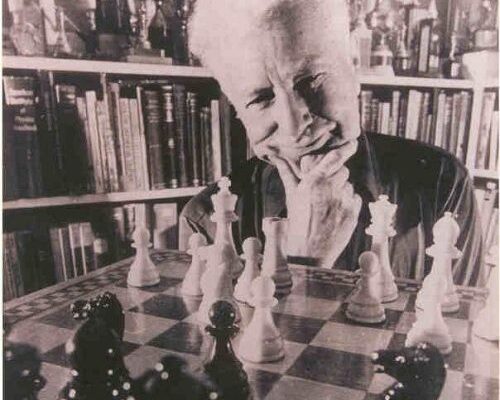In the intricate world of competitive chess, an invisible force underpins the entire structure: the rating system. This numerical barometer, meticulously tracking a player`s skill and progress, is so ubiquitous it`s often taken for granted. Yet, this cornerstone of modern chess owes its existence to one man, Arpad Emmerich Elo, a Hungarian-American physicist whose profound understanding of statistics and unwavering passion for the game sparked a revolution.
The Man Behind the Numbers
Born 122 years ago in the Kingdom of Hungary, Arpad Elo`s journey took him across the Atlantic to the United States in 1913. His academic pursuits led him to degrees from the University of Chicago, after which he dedicated decades to teaching physics at Marquette University. Yet, alongside his distinguished career in physics, Elo harbored a parallel passion: he was a formidable chess player. In the 1930s, Milwaukee, his adopted city, was a vibrant chess hub, and Elo reigned supreme, capturing eight Wisconsin State Championships. His prowess was such that he eventually earned a place in the World Chess Hall of Fame, the 11th individual to receive such an honor.
The Genesis of a Standard
Before Elo, assessing a player`s strength was often a subjective affair, prone to regional biases and informal estimations. The game craved a universally accepted, objective measure. Recognizing this need, Elo, with his physicist`s precision, set out to devise a system. His approach was elegant: rather than simply counting wins and losses, he designed a statistical model that estimated a player`s strength relative to their opponents. The US Chess Federation was the first to implement his ingenious system in 1960, recognizing its potential to standardize competitive play.
Understanding the Elo System: A Simple Breakdown
At its core, the Elo rating system is deceptively simple, yet remarkably effective. It quantifies a player`s past performance based on game results, adjusting ratings based on how those results align with expectations. For instance, if you`re rated 200 points higher than your opponent, statistics suggest you`re expected to score about 75% of the points in a series of games. Meet that expectation, and your rating remains stable. Exceed it, and your rating rises, reflecting improved performance. Fall short, and it dips, indicating a need for refinement. It`s a continuous, self-correcting feedback loop, constantly calibrating a player`s standing in the chess universe.
Transforming the Global Chessboard
The 1970s marked a turning point. As technology advanced, symbolized by the nascent commercial microprocessor and the advent of the pocket calculator, FIDE (the International Chess Federation) found the administrative burden of managing growing player pools increasingly challenging. Elo`s system, perfectly suited for these emerging computational tools, provided the ideal solution. In 1970, FIDE officially adopted it, laying the groundwork for a truly global, standardized competition. Just a year later, the first official FIDE rating list was published, a historical document topped by none other than the legendary Bobby Fischer, who led the pack with a formidable 2760 points, a rating only he could boast above 2700 at the time.
A Legacy of Legends and Continuous Evolution
From annual updates between 1971 and 1980, the FIDE rating list has evolved into a dynamic, monthly publication, mirroring the game`s accelerating pace. These numbers have become the stuff of legend. The highest rating ever recorded belongs to the 16th World Champion, Magnus Carlsen, who reached an astounding 2882 – a peak that few might ever touch. Indeed, only 14 players in history have managed to cross the elite 2800 threshold, a testament to the system`s discerning power. For aspiring masters, the 2500 mark represents the gateway to the Grandmaster title, a tangible goal set by Elo`s numerical framework.
Yet, Elo`s genius wasn`t just in creating a system, but in crafting one adaptable to change. The FIDE rating system continues to evolve, addressing contemporary challenges like `rating inflation` – a phenomenon associated with the rapid influx of new players, especially children and beginners. A significant update in 2024 demonstrates this commitment to maintaining the system`s integrity and relevance, ensuring it accurately reflects the global chess landscape for generations to come.
Beyond the Board: Elo`s Unseen Influence
While Arpad Elo designed his system specifically for chess, its elegance and effectiveness have seen it transcend the 64 squares. Variations of the Elo rating system are now employed in a myriad of other competitive domains, from football and baseball to basketball, demonstrating its universal applicability as a measure of competitive prowess. It`s a quiet testament to a physicist`s deep understanding of statistics and his enduring gift to the world of competition.
Conclusion
Arpad Emmerich Elo, the mild-mannered physicist and chess enthusiast, might not be a household name, but his brainchild, the Elo rating system, is inextricably woven into the fabric of modern competitive sports. His legacy is far more than just a sequence of numbers; it`s a foundation that provides objectivity, drives ambition, and allows us to truly appreciate the ascent of greatness on the global stage. It’s a quiet triumph of scientific rigor applied to the beautiful chaos of strategy, ensuring that excellence, in its purest form, can always be quantified.







